NIL
Arch Manning and Quinn Ewers have very different NFL paths, plus Bill Belichick drama
Until Saturday Newsletter 
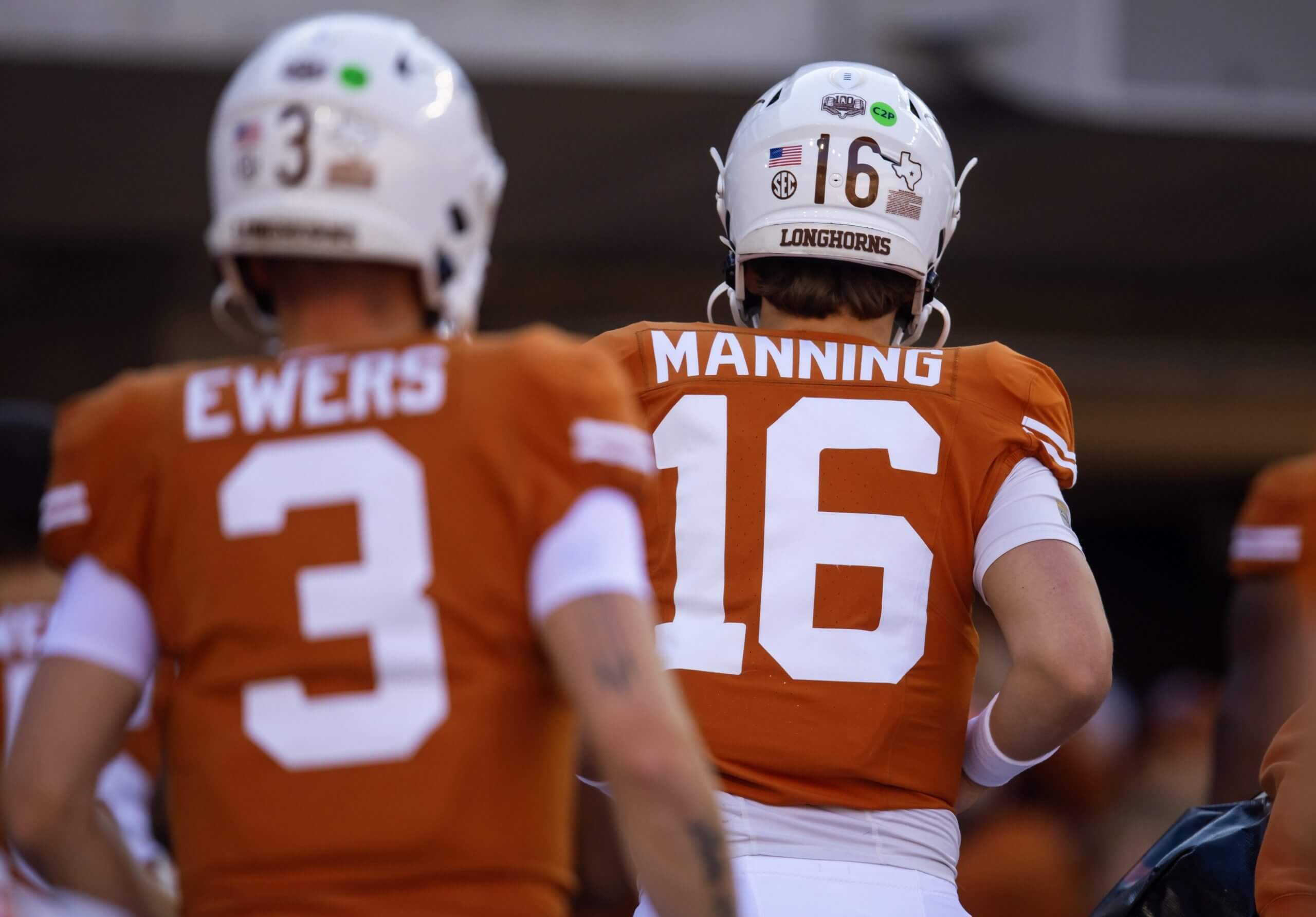


Until Saturday Newsletter 
Today in college football news, I finished a large order of Five Guys fries. I feel so fortified for the coming winter. Summer’s next, you say? Yeah, that’s how fortifying it was.
Grad School: Diverging paths for Manning and Ewers
In 2021, Texas high schooler Quinn Ewers was one of the highest-rated quarterback recruits ever. Right now, 247Sports still lists his teenage self as tied with Vince Young and others at No. 13 on the all-time prospects list, right ahead of names like Travis Hunter, Adrian Peterson and … Arch Manning.
Advertisement
Ewers transferred to Texas (after first becoming a bit of an NIL pioneer at Ohio State), where the younger Manning mostly sat on the bench. Their storylines were publicly intertwined during their two years in the Longhorns’ QB room, where Ewers even played along with jokes in commercials about having a Manning nephew as a backup, one of the most tantalizing backups ever.
Imagine being possibly the most-hyped QB recruit ever (at the time), but then being immediately overshadowed by the guy right behind you. I bet that sucks!
After last weekend’s NFL Draft, their trajectories are about as different as could be. In some ways, this feels like a fresh reset, even if Ewers’ path has gotten more treacherous:
- Ewers was drafted in the seventh round by the Miami Dolphins, where former top-five picks Tua Tagovailoa and Zach Wilson have depth-chart spots. What a landing. Some might second-guess whether he made the right call when he could’ve found a decent NIL deal for one more year in school, but … that sounds kinda awful, man. Laboring to lead a mid-level power toward a solid bowl game while all eyes swing toward your former backup, the early Heisman favorite likely to reach the CFP? Get me outta there.
- Yet another layer of awkwardness Ewers avoided by leaving: Manning is the current likeliest choice to be next year’s No. 1 pick, per Dane Brugler’s way-too-early mock. I keep looking ahead to this season, when Manning becomes a 2023 Colorado-esque sensation among people who usually watch much more NFL than college football. I think Dane confirmed that’s unavoidable. If I’m Ewers, no way do I wanna hassle with clawing to be a day-two pick in, as noted, my former backup’s draft class. “Oh, my team missed on Manning, but maybe we can look into the guy who used to start ahead of him.” Brutal. No thanks.
Elsewhere in draft stuff:
- Ohio State finished one pick shy of tying Georgia’s record of 15 picks in a single draft. Scott Dochterman has all the stats, showing the SEC and Big Ten becoming even more dominant. Alabama A&M on the board, though!
- The Athletic’s NFL beat writers named their favorite picks. Yeah, Giants fans are gonna adore Arizona State’s Cam Skattebo. New Yorkers love using TOUGH as a compliment.
- Sooooooo, yeah, the Shedeur Sanders thing. His plummet from the first round to the fifth — which made Mel Kiper lose it on air — could probably make for five or six entire newsletters. For now: Per Bruce Feldman’s notes, NFL bigwigs found Sanders to have “no awareness about how he’s coming across,” and Dianna Russini said the QB seems to have “approached these visits with teams as a recruiting trip versus a job interview.”
- OK, a bit more Sanders: The Cleveland Browns’ quarterbacks room has entirely too much stuff going on now. There was already way too much going on even before they drafted Sanders and Oregon QB Dillon Gabriel!
- Oh, and last Sanders note: Let the experiences of both Sanders brothers serve as an argument for letting an agent guide you through acting like a normal draft prospect. (If you ever find yourself in the predicament of being a talented recent former college athlete. I believe in you.) Undrafted safety Shilo, who ended up signing with Tampa Bay, semi-joked about having fired his father as his agent — while signing with an actual agent, Drew Rosenhaus.
Since I know you mostly just wanna see that 2026 mock draft, here it is again. I won’t tell anybody you clicked on a forecast for an entire year from now.
Quick Snaps
Awkwardness: It would be OK if this weren’t any of my business
Bill Belichick is the 73-year-old head coach of the University of North Carolina Tar Heels football team. Jordon Hudson is a 24-year-old college grad who seemingly works as his professional manager in some capacity — emails reveal she takes an active role in the Belichick brand at UNC — and also is his girlfriend.
I would be completely fine with knowing no more information about their relationship beyond that. It doesn’t even rise to the level of Trying To Respect Their Privacy. I would simply give a thumbs up to the idea of having ignorance about them. I didn’t spend a lot of time prying for personal details about Nick Saban and Miss Terry when she was a widely beloved football celebrity, for instance.
Except Belichick-Hudson continues to be a storyline that is constantly asking me both to ignore it (acceptable) and to care about it (no thank you). She was in a Super Bowl commercial with him, and, this past weekend, she appeared in a “CBS Sunday Morning” interview as something like his PR handler. (If Belichick didn’t want her to be a public figure, he could ask her to be less visible on the field during UNC’s spring football, right? He’s the head coach!)
The awkward moment: When Belichick was asked how he met Hudson, the person who publicly oversees parts of his work life and was literally on camera at that moment, she shut the question down, saying, “We’re not talking about this.”
Great! I don’t care either! Except this has been known for a while now. They met on a flight a few years ago, something she’s even posted about. Great! Case closed! Right? Please?
I hope this goes great for everyone, and I will not complain if we indeed are “not talking about this.” But yes, the most surreal part of the whole thing is that Bill freaking Belichick, the NFL’s bluntest and most football-obsessed coach, has elected to take part in one of the most chattered-about off-field dramas in all of sports.
(I gotta be honest, though. Belichick aligning himself with somebody who has even less patience than he does for media questions? That part’s really impressive.)
OK, that’s all for today. Email me at untilsaturday@theathletic.com with any thoughts!
Last week’s most-clicked: Why are so many former top-100 recruits hitting the transfer portal so quickly?
NIL
ESPN Analyst Drops Truth Bomb For $3 Million NIL Valued College Football QB Ahead of 2025 Season
Greg McElroy is getting real about the impact of NIL on high school athletics. The ESPN analyst opened up about the weight of NIL expectations on young athletes like Michigan Wolverines’ five-star recruit Bryce Underwood. Underwood, who has an NIL valuation of $3 Million per ON3, possesses a first-hand experience with the changing landscape of […]
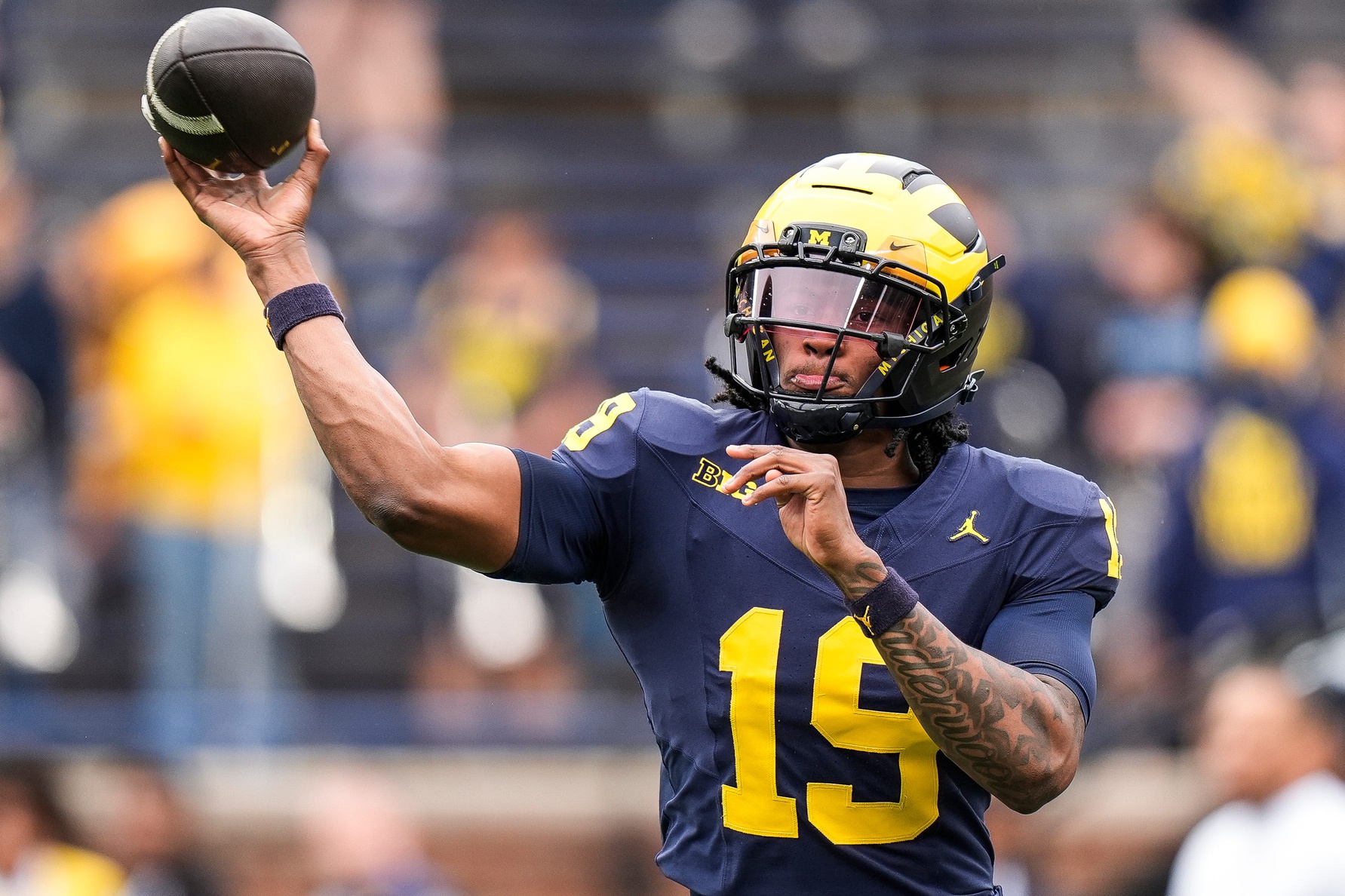
Greg McElroy is getting real about the impact of NIL on high school athletics. The ESPN analyst opened up about the weight of NIL expectations on young athletes like Michigan Wolverines’ five-star recruit Bryce Underwood.
Underwood, who has an NIL valuation of $3 Million per ON3, possesses a first-hand experience with the changing landscape of college athletics. He is the No. 1-ranked quarterback in the 2025 class and flipped his commitment from LSU after Michigan offered him an NIL deal reportedly worth $10.5 million over the next four years.
In an appearance on “Always College Football” on Thursday, McElroy discussed the increased pressure placed on high school athletes in the NIL age.
“I think Bryce Underwood is making a lot more money than pretty much everybody,” McElroy said. “But there’s been a handful of guys that have not lived up to the expectations and the weight of the NIL expectations, because I do think – now in the era of the NIL – the expectations are higher and the pressure is higher as well.”
Expectations are certainly high for Underwood. The Wolverines’ massive NIL package highlights their need for the nation’s top quarterback recruit.
Michigan had one of the worst offenses in the country last season and played to an 8-5 record after going undefeated the year before. The Wolverines had the 131st passing offense, something they will look to bounce back from with Underwood’s help.

What Bryce Underwood brings to Michigan?
Bryce Underwood joins the Wolverines as the No. 1 player in his class with a perfect 247Sports prospect score.
Underwood was a four-year starter at Belleville High School, where he led the Tigers to two Division I MHSAA State Championships in 2021 and 2022 and three consecutive appearances from 2021 to 2023.
In his senior season, Underwood accumulated 2,509 passing yards and 32 touchdowns with just six interceptions. He made 71.8 percent of his passes and scored six rushing touchdowns with over 600 yards.
Throughout his high school career, he racked up 12,919 all-purpose yards including 11,488 passing yards and 179 total touchdowns.
Underwood was a dominant force in high school and played his way into being the nation’s top recruit. He will look to transform Michigan’s offense with his impressive skill set. He will hopefully look to transform Michigan’s offense with his impressive skill set and abilities.
College Sports Network has you covered with the latest news, analysis, insights, and trending stories in football, basketball, and more!
NIL
LSU athletes can benefit from revenue sharing with new NIL rules
BATON ROUGE, La. (Louisiana First News) — When the LSU baseball team lifted its eighth championship trophy Sunday, it symbolized the end of a consequential era for college sports: the beginning of name, image and likeness (NIL). New rule changes will impact what it takes to stay atop the college sports world. Advertisement “You have […]

BATON ROUGE, La. (Louisiana First News) — When the LSU baseball team lifted its eighth championship trophy Sunday, it symbolized the end of a consequential era for college sports: the beginning of name, image and likeness (NIL). New rule changes will impact what it takes to stay atop the college sports world.
Advertisement
“You have to be able to adapt,” said Fritz Metzinger, a New Orleans sports attorney.
A House settlement earlier this month paved the way for revenue sharing. Under this new model, athletic departments will be able to spend up to $20.5 million on the people who drive a program’s success.
“Schools like LSU can now directly pay their student athletes,” Metzinger said.
That will add a new wrinkle to what has been possible since 2021, when the NIL era first began. For the last four years, athletes could only profit from endorsement deals. Metzinger said an “arms race” started to acquire top talent, and a “pay-for-play” system developed across college sports.
Advertisement
Groups called collectives stepped in to become fundraising arms for schools. At LSU, the collective is called Bayou Traditions. The money required to field top teams increased over the last four years, particularly in football and basketball.
“These collectives have become very powerful,” Metzinger said. “Local businesses that’re LSU supporters or Tulane supporters have thrown a lot of money at it.”
Baton Rouge attorney Gordon McKernan got in early.
“I signed (former LSU women’s basketball player) Alexis Morris,” McKernan said. “I think it was the first NIL deal at LSU. I don’t remember.”
McKernan signed many more athletes to deals, where they appeared on billboards, in commercials, and on social media posts. The money necessary to keep these players in Baton Rouge continued to rise.
Advertisement
“You’ve got to have the facilities, the tradition, all the winning and all that stuff is great,” McKernan said. “But you have to have the money, or they’ll go somewhere else.”
Under new changes, boosters will be relied on less. An athlete who signs any deals with a booster or collective will need to prove the deal isn’t a pay-for-play situation to a newly-created board, Metzinger said, as programs can use their own revenue for that money.
“I’ve been told they’re not going to ask me for as much, or other boosters, as well,” McKernan said. “Like, ‘hey, we’ve got more money now, we’re in a good spot.”
Athletes can still do third-party deals, which will be advantageous for businesses and athletes in a culture that has become increasingly star-powered.
Advertisement
“Any other businesses can pay any athlete whatever they want,” Metzinger said.
AJ’s Sports Cards on Drusilla Lane in Baton Rouge has been doing NIL signing deals with athletes, where they come to the shop and autograph memorabilia for fans.
“I think it’s good for the hobby,” said Nikki Erckert, AJ’s Sports Cards owner. “The little collectors get to meet their heroes.”
Erckert said the first NIL deal was with former baseball player Tre Morgan. The return on investment was immediately apparent.

“At least 150 people showed up to our very first in-person signing,” Morgan said.
The next AJ’s signing is Saturday, and it will feature members from the newly crowned LSU baseball champions. Erckert said that the signing was set up months in advance.

“A show that probably would’ve brought in about 500 customers…no telling what that’s going to look like now,” Erckert said.
Advertisement
Under the new rules, Metzinger said LSU is primed to continue to thrive athletically because of the business support, marketability and revenue opportunities.
Latest News
Copyright 2025 Nexstar Media, Inc. All rights reserved. This material may not be published, broadcast, rewritten, or redistributed.
For the latest news, weather, sports, and streaming video, head to Louisiana First News.
NIL
Big 12, Big Ten announce partnership with PayPal to payout revenue share to student-athletes
Colleges are preparing for revenue-sharing with student-athletes beginning on July 1st. In anticipation of that, the Big 12 and Big Ten have announced a new partnership with PayPal to pay out their student-athletes. Big 12 Commissioner Brett Yormark appeared on Get Up alongside PayPal CEO Alex Chriss. There, Yormark dove into what made the partnership […]
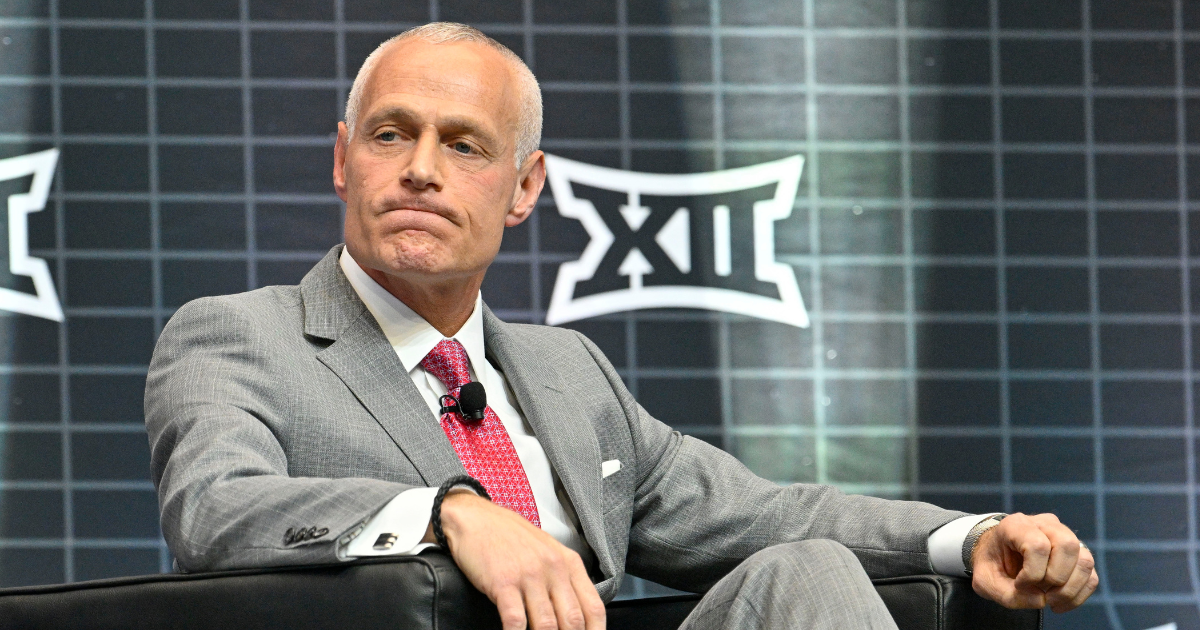
Colleges are preparing for revenue-sharing with student-athletes beginning on July 1st. In anticipation of that, the Big 12 and Big Ten have announced a new partnership with PayPal to pay out their student-athletes.
Big 12 Commissioner Brett Yormark appeared on Get Up alongside PayPal CEO Alex Chriss. There, Yormark dove into what made the partnership a good idea for the conference at this point in time.
“July 1 starts rev-share with our student-athletes,” Yormark said. “A long time coming and well deserved from a conference perspective, but I speak beyond just the Big 12. I speak for all of collegiate athletics; we need a reliable payment platform to distribute money to our student-athletes.”
Revenue-sharing stems from the recent House settlement. That is going to lead to several new changes to college athletics and NIL specifically. That includes third-party oversight over NIL, a new enforcement agency, and roster limits. Arguably most important, it also allows for revenue-sharing between schools and student-athletes, with each school being able to share $20.5 million annually.
“We’ve [Big 12 and PayPal] been at this for over 14 months,” Yormark said. “Trying to figure out if there was a place and a point of entry for PayPal in this world of collegiate athletics, and we found it on the heels of the [House] settlement and rev-share. Truly excited about it. When you think about PayPal and Venmo, probably the most culturally relevant payment platform globally. 100 million customers, including consumers and merchants. It’s a big opportunity for the Big 12. Big for college athletics and I truly believe that the product is ubiquitous across all campuses, and today, yes, we’re announcing two conferences, but it’s going to go well beyond that moving forward.”
Per Ross Dellenger, the Big 12 deal with PayPal is significant. It’s added value of about $100 million over five years, or ~$1M per school annually.
“PayPal and Venmo are the applications that college students are using now,” Alex Chriss said. “Over half of college students are using Venmo today, and it’s the ecosystem that they use. Their parents are giving them money. It’s how they’re paying for their pizzas. It’s the ecosystem of the economy of college students. Now, they’re able to get the payouts from revenue share, will be able to do NIL distributions. We’ll be able to give them a debit card. We’ll be giving debit cards with Venmo with their college logo on them. So, we’re enabling this whole ecosystem to work going forward.”
Ultimately, Yormark believes that this step by the Big 12 and the Big Ten is the first step to some uniformity in how student-athletes are paid. Only time will tell, but Alex Chriss is confident that PayPal and Venmo are the platforms to accomplish this.
“It really is,” Chriss said. “We’re in discussions with all the conferences. PayPal is the ecosystem. The easiest way to distribute these funds. You want to make it seamless and simple for student-athletes to be able to get their dollars in their wallet and be able to spend it, and PayPal is the right way to do it.”
NIL
Report: Florida State defends controversial rev-share contract language that concerned agents, rival GMs
Florida State released a statement to CBS Sports defending language in drafts of the school’s revenue-sharing contracts. The school addressed reporting from CBS Sports detailing controversial language, which concerned agents and rival GMs. FSU pointed out that individual situations will be “unique” as the revenue-sharing era gets underway in college athletics. Under the newly approved […]

Florida State released a statement to CBS Sports defending language in drafts of the school’s revenue-sharing contracts. The school addressed reporting from CBS Sports detailing controversial language, which concerned agents and rival GMs.
FSU pointed out that individual situations will be “unique” as the revenue-sharing era gets underway in college athletics. Under the newly approved House v. NCAA settlement — which will be implemented July 1 – schools will be able to directly share up to $20.5 million with athletes, and 75% is widely expected to go toward football.
“As we enter into a new age of collegiate athletics, Florida State has put together an agreement that provides deliverables and expectations for all parties,” Florida State’s statement to CBS Sports read. “Each individual situation will be unique and the hypotheticals are impossible to predict. However, we are committed to continuing to provide an elite experience for our student-athletes in all aspects of their collegiate career. Florida State is looking forward to the mutually beneficial partnerships with our student-athletes in this new era.”
In drafts viewed by CBS Sports, a clause said Florida State could unilaterally extend a player at the end of a contract without going through negotiations with them. Additionally, there’s a maximum $2,500 fine for the first offense is a player loses any team equipment, such as cleats, and the maximum fine for use of a controlled substance for the first time is $1,000.
The drafts also include a clause regarding breach of contract. It includes “illness or injury which is serious enough to affect the value of rights granted to the school,” CBS Sports reported. Florida State could either renegotiate or cancel a player’s deal at its discretion after any sort of injury, according to the way the clause is written. The language concerned rival general managers’ agents who spoke with CBS Sports.
“Some of the concepts are pretty standard,” an agent, who represents at least one player at Florida State, told CBS Sports. “But FSU is going about this far more aggressively than any school I’ve seen. I’m disappointed by the adversarial nature of these contracts.”
Judge Claudia Wilken approved the House v. NCAA settlement earlier this month, officially ushering in the revenue-sharing era in college sports. The cap is set at $20.5 million for the first year of the settlement, and that figure is expected to increase annually as part of the 10-year agreement.
While Florida State has not confirmed how it will distribute the rev-share funds, the Board of Regents paved the way for the university to do so. Many schools across the country are planning to share 75% of the funds with football, 15% with men’s basketball, 5% with women’s basketball and 5% with the remainder of the sports.
NIL
NBA Draft: Why it’s unlikely there’s a Jalen Brunson or Nikola Jokić in this year’s second round
Apologies to any NBA teams hoping they unearthed the next Draymond Green, Jalen Brunson or Nikola Jokić on Thursday night. The second round of this year’s NBA draft became unusually barren after many prospects returned to college to take advantage of a skyrocketing NIL market. Advertisement In the pre-NIL era, college basketball underclassmen routinely entered […]
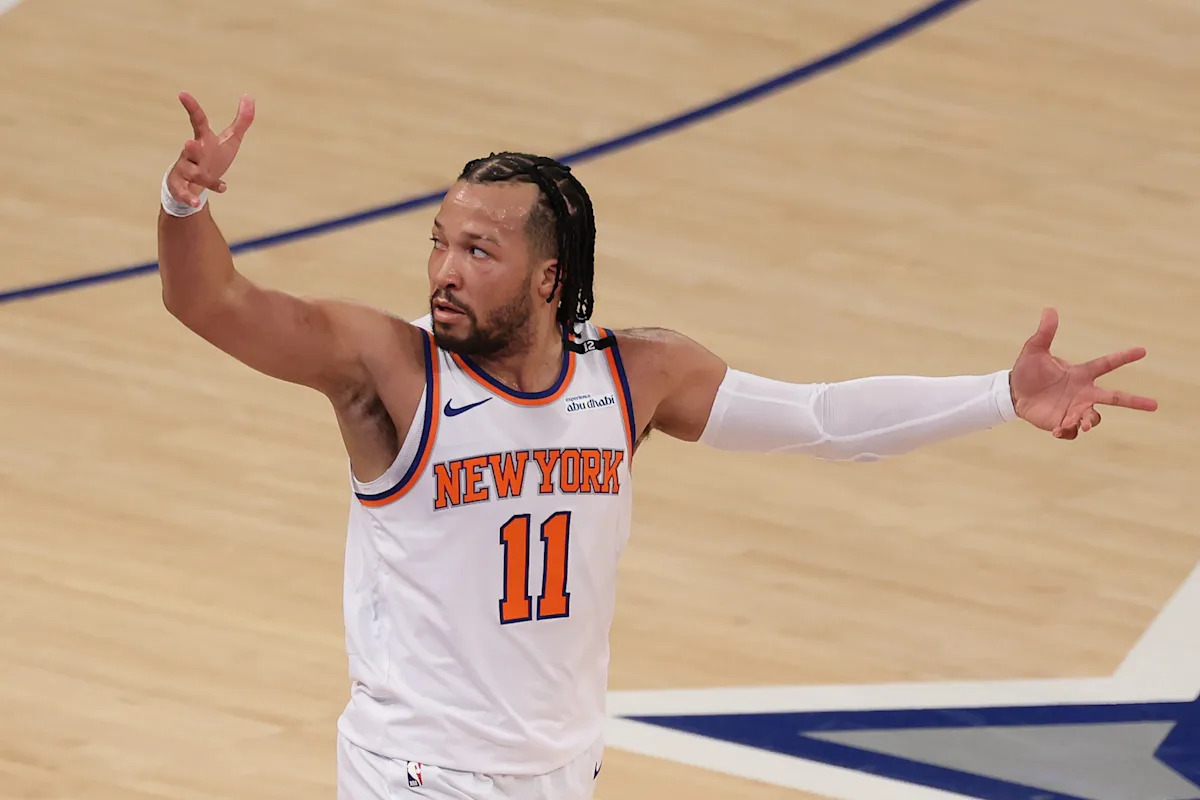
Apologies to any NBA teams hoping they unearthed the next Draymond Green, Jalen Brunson or Nikola Jokić on Thursday night.
The second round of this year’s NBA draft became unusually barren after many prospects returned to college to take advantage of a skyrocketing NIL market.
Advertisement
In the pre-NIL era, college basketball underclassmen routinely entered the NBA Draft even if they were projected to slip to the second round or go unselected. They earned more money chasing an NBA two-way contract or an overseas payday than they could returning to a college model where the only payouts came under the table.
The calculus began to change in 2021 when a series of court rulings forced the NCAA to allow athletes to benefit financially from their name, image and likeness without fear of penalty. This spring, underclassmen who were fringe NBA prospects returned to college in record numbers because deep-pocketed college programs were willing to pay them as much as $3 million to $4 million per year.
Only 106 players entered the 2025 NBA Draft as early entry candidates, the lowest number since 2015 and down from a peak of 353 in 2021. More than half those 106 early entrants then withdrew from the draft before the NBA’s deadline — even some who might have been selected in the 20-45 range this week.
Advertisement
Texas Tech’s JT Toppin, Florida’s Thomas Haugh, UConn’s Alex Karaban, Duke’s Isaiah Evans and Purdue’s Braden Smith and Trey Kaufman-Renn were among the prominent college stars who did not even test the waters this spring. Alabama’s Labaron Philon, Kentucky’s Otega Oweh and Auburn’s Tahaad Pettiford withdrew from the draft just before the May 28 deadline for underclassmen to make their decisions. So did Houston’s Milos Uzan, Florida’s Alex Condon, Michigan’s Yaxel Lendeborg and San Diego State’s Miles Byrd.
“This year’s draft class, more than any ever, has been affected by the NIL and affected by the new pay-for-play,” Boston Celtics general manager Brad Stevens told NBC Sports Boston last month. Stevens added that the absence of the prospects who returned to college would be felt in “the back end of the draft and even into the late first.”
That much was apparent from which players were selected on Thursday night. Ten of the first 14 to come off the board played at least four years of college basketball. Many were fifth-year seniors with no college eligibility remaining, from Duke’s Sion James, to Auburn’s Johni Broome, to Florida’s Alijah Martin, to Tennessee’s Chaz Lanier.
Advertisement
The deeper the second round progressed, the fewer NBA-caliber options remained. How often would a player like little-known Liberty catch-and-shoot specialist Taelon Peter get drafted in previous years? Or French wing Mohamed Diawara, who at 20 years old averaged a modest 5.8 points and shot sub-30% from behind the arc for Cholet this past season?
The good news for NBA teams is that the dearth of second-round talent could be a short-term problem. Some prospects who returned to college this year will exhaust their eligibility by 2026. Others could have more incentive to chase NBA money in the future.
The House vs. NCAA settlement puts a cap on how much colleges are allowed to pay athletes via revenue sharing and calls for the establishment of a new enforcement entity responsible for stamping out the pay-for-play deals that have dominated the NIL era of college sports. Athletes are required to submit to the new NIL Go clearinghouse all third-party NIL deals that exceed $600. The clearinghouse then must determine which deals are for a valid business purpose and are within a “reasonable range of compensation” and which are simply a recruiting incentive.
Advertisement
How will the clearinghouse determine which deals are circumventing NIL rules and which are legitimate? Nobody knows. Nor does anyone know whether the clearinghouse’s decisions will hold up in court against a legal challenge.
The answers to those questions will determine whether future fringe NBA prospects turn pro as quickly as possible or keep returning to college in record numbers.
That trend will only continue if the seven-figure NIL money is still available.
NIL
Michigan recruiting staff salaries revealed
In a 60-person staff of full-time football employees, Michigan devotes six to recruiting and personnel. The division is lead by senior associate AD/general manager Sean Magee, with Albert Karschnia serving as director of player personnel, Samuel Popper as director of recruiting and Kayli Johnson as director of on-campus recruiting. The Wolverines also employ assistant director […]

In a 60-person staff of full-time football employees, Michigan devotes six to recruiting and personnel. The division is lead by senior associate AD/general manager Sean Magee, with Albert Karschnia serving as director of player personnel, Samuel Popper as director of recruiting and Kayli Johnson as director of on-campus recruiting. The Wolverines also employ assistant director of recruiting John Collins and associate director on-campus recruiting/operations Ashley Terhune.
By comparison, Texas A&M employed 10 full-time staffers in the recruiting and personnel space. In real dollars, Texas A&M committed $980,000 per year in salary to recruiting and personnel, while Michigan pays $833,000 and change to its 6-person operation — with nearly half going to one person.
According to copies of contracts obtained by FootballScoop via open records request, Magee signed a 3-year contract running from March 1, 2024 through Feb. 28, 2027, with $10,000 annual raises. He’ll make $370,000 in 2026. All other recruiting staff members are on 1-year deals, running from March 1 to Feb. 28. Magee’s contract calls for a 50 percent buyout of his annual salary if he leaves prior to the conclusion of the 2026 football season, but does not require a buyout if he takes an AD or deputy AD position elsewhere. All other contracts call for 100 percent buyouts if broken before the end of the 2025 football season, and do not offer no-buyout off-ramps for promotions taken elsewhere.
All contracts also dictate Michigan’s football recruiting staff reports to AD Warde Manuel, not head coach Sherrone Moore.
Sean Magee, senior associate AD/general manager: $360,000
Albert Karschnia, director of player personnel: $180,250
Sam Popper, director of recruiting: $108,150
Kayli Johnson, director of on-campus recruiting: $85,000
John Collins, assistant director of recruiting: $50,000
Ashley Terhune, associate director of on-campus recruiting and operations: $50,000
Magee spent 2017-22 at Michigan, mostly as associate AD for football, before spending the 2022 and ’23 seasons as the chief of staff for the Chicago Bears. He returned to Ann Arbor in March 2024 as GM, where he oversees all aspects of recruiting, player personnel and NIL. A US Naval Academy graduate and Midshipmen football player, he served across the globe as an active duty naval officer from 2004-12 while also earning his MBA from William & Mary during that time. Magee then went to work for Navy football as director of player personnel.
Karschnia is a 2015 Michigan graduate who interned with the football program as an undergraduate. He spent 2017-21 as the director of player personnel at Central Michigan, then returned to U-M in December 2021 as director of recruiting operations. He was promoted to director of player personnel in 2024.
Also a Michigan graduate, Popper returned to Michigan in 2023 after stints with Oregon, Akron and Memphis.
Johnson ran track at Michigan State and Texas Tech, then worked as a stadium operations intern for the Detroit Lions, and then as assistant director of recruiting operations at Rutgers from 2023-24 before joining Michigan’s staff in March 2024. Collins also came aboard in March 2024 after serving as a recruiting and personnel analyst at Georgia.
Terhune is a Purdue graduate who held a variety of roles as an undergraduate for the Boilermakers before graduating in 2023. She worked in NIL at Western Kentucky for a year before joining Michigan last summer.
-

 Motorsports2 weeks ago
Motorsports2 weeks agoNASCAR Weekend Preview: Autódromo Hermanos Rodríguez
-

 Motorsports2 weeks ago
Motorsports2 weeks agoNASCAR Through the Gears: Denny Hamlin has gas, a border needs crossing, and yes, that’s a Hemi
-

 High School Sports3 weeks ago
High School Sports3 weeks agoHighlights of the Tony Awards
-

 Health2 weeks ago
Health2 weeks agoGymnast MyKayla Skinner Claims Simone Biles 'Belittled and Ostracized' Her amid Riley …
-

 Motorsports2 weeks ago
Motorsports2 weeks agoNASCAR Race Today: Mexico City start times, schedule and how to watch live on TV
-
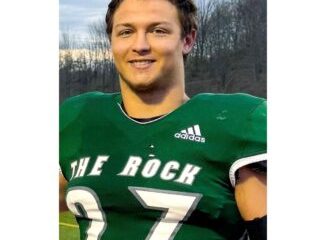
 Health3 weeks ago
Health3 weeks agoParents Create Fund in memory of son, raise awareness about suicide and mental health
-

 NIL2 weeks ago
NIL2 weeks agoTennessee law supersedes NCAA eligibility rule
-

 Professional Sports3 weeks ago
Professional Sports3 weeks agoUFC 316
-

 Sports2 weeks ago
Sports2 weeks agoCoco Gauff, The World's Highest
-

 College Sports3 weeks ago
College Sports3 weeks agoFisk to discontinue history-making gymnastics program after 2026 | Area colleges









 | The Pat McAfee Show
| The Pat McAfee Show

























